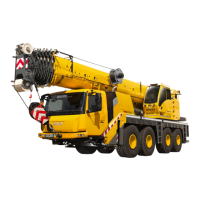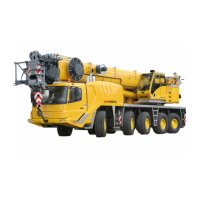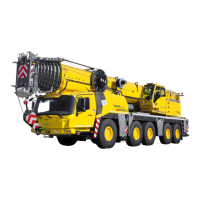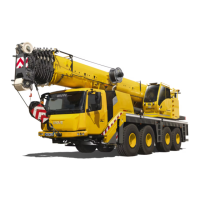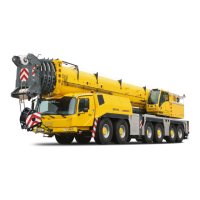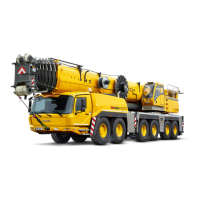Basic safety instructions
2.6 Notes on transporting persons
Operating manual GMK 6400 3 112 993 en 2 - 9
12.07.2013
Operation Operations planning for transporting persons must be carried out with spe-
cial care. If official registration is required in the country in which you are
working, this must be done with the relevant authorities in good time.
The truck crane must be equipped as prescribed and be level.
Before transporting persons, the crane operator must make sure that the
safety devices and emergency operation functions are in perfect working
order.
Before transporting persons, the crane operator must make sure that the
lifting limit switch is not overridden.
The
Operating manual and the Lifting capacity table must be in the crane cab
and within easy reach of the crane operator.
All crane movements must be performed slowly and with extreme care.
The crane operator is not allowed to leave the crane cab until the equipment
for lifting persons has been set down and the person transported has left it.
The crane operator must take care that the degree of utilisation does not
exceed 50% during operation.
The number of reeved rope lines must be selected such that the load on the
hoist rope does not exceed 50% of the rope pull. At the same time, the total
weight of the lifted load must be considered, consisting of the weights of the
hook block, the lifting gear and the equipment for lifting persons including
the maximum payload.
When transporting persons, the crane operator must maintain the safe dis-
tances from electrical lines applicable in the country in which he is working.
The distances are normally greater than the distances for lifting loads spec-
ified in the
Safe distance from electrical lines section.
The transported person must have radio contact to the crane operator.
When used for transporting persons, the truck crane must not be used for
other tasks.
The crane operator is not permitted to exceed the maximum permissible
wind speeds and wind loads for transporting persons applicable in the
country in which he is working. These values are normally lower than those
for lifting loads specified in the
lifting capacity table.
When the equipment for lifting persons is being used and is in a stationary
position, then the slewing gear, hoist, derricking gear and telescoping
mechanism must be secured against accidental use by being switched off.
s
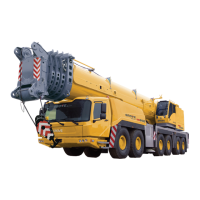
